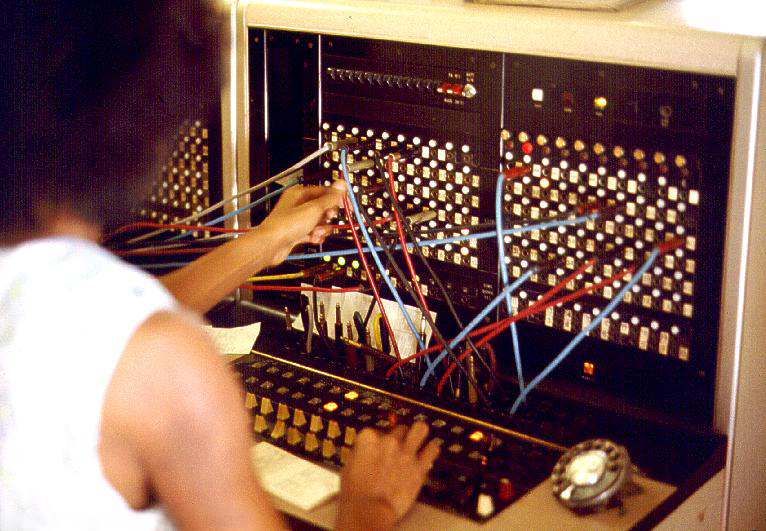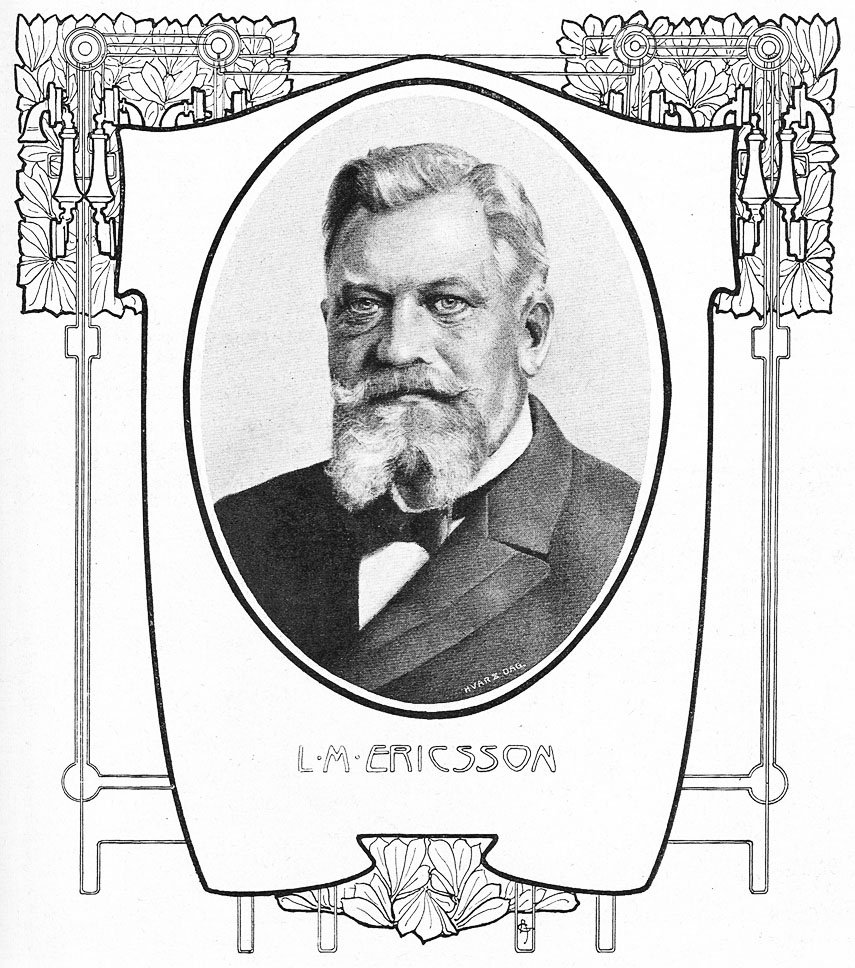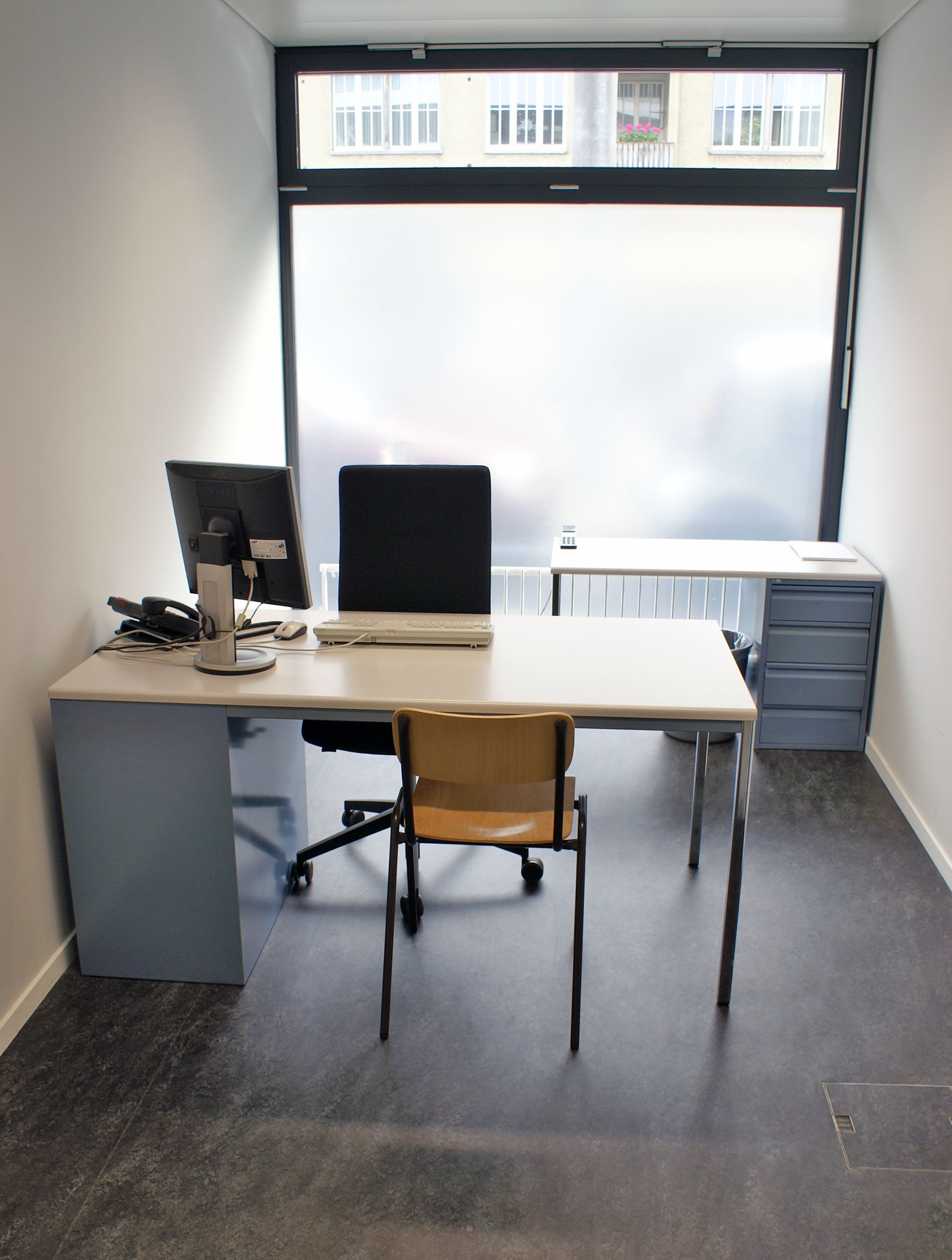|
Field Telephone
Field telephones are telephones used for military communications. They can draw power from their own battery, from a telephone exchange (via a central battery known as CB), or from an external power source. Some need no battery, being sound-powered telephones. Field telephones replaced flag signals and the telegraph as an efficient means of communication. The first field telephones had a battery to power the voice transmission, a hand-cranked generator to signal another field telephone or a manually-operated telephone exchange, and an electromagnetic ringer which sounded when current from a remote generator arrived. This technology was used from the 1910s to the 1980s. Later the ring signal was operated by a pushbutton or automatically as on domestic telephones. Manual systems are still widely used, and are often compatible with the older equipment. Shortly after the invention of the telephone, attempts were made to adapt the technology for military use. Telephones were already ... [...More Info...] [...Related Items...] OR: [Wikipedia] [Google] [Baidu] |
Telephone Switchboard
A telephone switchboard was a device used to connect circuits of telephones to establish telephone calls between users or other switchboards, throughout the 20th century. The switchboard was an essential component of a manual telephone exchange, and was operated by switchboard operators who used electrical cords or switches to establish the connections. The electromechanical automatic telephone exchange, invented by Almon Strowger in 1888, gradually replaced manual switchboards in central telephone exchanges around the world. In 1919, the Bell System in Canada also adopted automatic switching as its future technology, after years of reliance on manual systems. Nevertheless, many manual branch exchanges remained operational into the second half of the 20th century in many enterprises. Later electronic devices and computer technology gave the operator access to an abundance of features. A private branch exchange (PBX) in a business usually has an attendant console, or an auto-atten ... [...More Info...] [...Related Items...] OR: [Wikipedia] [Google] [Baidu] |
Military Communications
Military communications or military signals involve all aspects of communications, or conveyance of information, by armed forces. Military communications span from pre-history to the present. The earliest military communications were delivered by runners. Later, communications progressed to visual and audible signals, and then advanced into the electronic age. Examples from ''Jane's Military Communications'' include text, audio, facsimile, tactical ground-based communications, naval signalling, terrestrial microwave, tropospheric scatter, satellite communications systems and equipment, surveillance and signal analysis, security, direction finding and jamming.IHS Jane'sMilitary Communications Retrieved 2012-01-23. History In past centuries communicating a message usually required someone to go to the destination, bringing the message. Thus, the term ''communication'' often implied the ability to transport people and supplies. A place under siege was one that lost communicat ... [...More Info...] [...Related Items...] OR: [Wikipedia] [Google] [Baidu] |
Basic Books
Basic Books is a book publisher founded in 1950 and located in New York, now an imprint of Hachette Book Group. It publishes books in the fields of psychology, philosophy, economics, science, politics, sociology, current affairs, and history. History Basic Books originated as a small Greenwich Village-based book club marketed to psychoanalysts. Arthur Rosenthal took over the book club in 1950, and under his ownership it soon began producing original books, mostly in the behavioral sciences. Early successes included Ernest Jones's ''The Life and Work of Sigmund Freud'', as well as works by Claude Lévi-Strauss, Jean Piaget and Erik Erikson. Irving Kristol joined Basic Books in 1960, and helped Basic to expand into the social sciences. Harper & Row purchased the company in 1969. In 1997, HarperCollins announced that it would merge Basic Books into its trade publishing program, effectively closing the imprint and ending its publishing of serious academic books. That same year, Bas ... [...More Info...] [...Related Items...] OR: [Wikipedia] [Google] [Baidu] |
Deborah Nelson
Deborah Nelson is a Pulitzer prize-winning freelance journalist at Reuters and the Associate Professor of Investigative Reporting at the Philip Merrill College of Journalism at the University of Maryland. Nelson earned her B.S. in Journalism from Northern Illinois University and her J.D. from the DePaul University College of Law in 1987. Prior to joining the faculty at the University of Maryland in 2006, she was the Washington investigations editor for the ''Los Angeles Times'', the national investigative team reporter for ''The Washington Post'', and a reporter for the ''Chicago Sun-Times''. In 1997, Nelson won the Pulitzer Prize for Investigative ReportingBurns, Hilliary"The 1997 Pulitzer Prize Winners Investigative Reporting" ''pulitzerprize.org'' for her investigative work for the Seattle Times, exposing “widespread corruption and inequities in the federally-sponsored housing program for Native Americans, which inspired much-needed reforms.” In 2008, she received critical a ... [...More Info...] [...Related Items...] OR: [Wikipedia] [Google] [Baidu] |
Siemens
Siemens AG ( ) is a German multinational conglomerate corporation and the largest industrial manufacturing company in Europe headquartered in Munich with branch offices abroad. The principal divisions of the corporation are ''Industry'', ''Energy'', ''Healthcare'' (Siemens Healthineers), and ''Infrastructure & Cities'', which represent the main activities of the corporation. The corporation is a prominent maker of medical diagnostics equipment and its medical health-care division, which generates about 12 percent of the corporation's total sales, is its second-most profitable unit, after the industrial automation division. In this area, it is regarded as a pioneer and the company with the highest revenue in the world. The corporation is a component of the Euro Stoxx 50 stock market index. Siemens and its subsidiaries employ approximately 303,000 people worldwide and reported global revenue of around €62 billion in 2021 according to its earnings release. History 1847 to ... [...More Info...] [...Related Items...] OR: [Wikipedia] [Google] [Baidu] |
Terma A/S
Terma A/S is a Danish weapon and aerospace manufacturer for both civilian and military applications, and is owned by the Danish company Thrige Holding A/S. It is Denmark's largest company within the aerospace and weapon industry, employing approximately 1,100 people worldwide. The company was founded in 1949 by Orla and Svend Aage Jørgensen; it originally focused on the production of thermometers and manometers for ships and various other metal components. Following its purchase by Thorkild Juncker, Terma A/S refocused itself on the production of electronic measuring instruments along with early radar systems; it expanded rapidly during the 1950s and 1960s. The firm became a leader in defence electronics, and had diversified into air defense systems, aircraft avionics, and missiles by 1970. It continued to grow, acquiring various other Danish defense firms during the 1990s. In 1999, Terma A/S acted at the prime contractor for the Ørsted satellite, the first Danish satellite to ... [...More Info...] [...Related Items...] OR: [Wikipedia] [Google] [Baidu] |
Racal
Racal Electronics plc was a British electronics company that was founded in 1950. Listed on the London Stock Exchange and once a constituent of the FTSE 100 Index, Racal was a diversified company, offering products including voice loggers and data recorders, point of sale terminals, laboratory instruments and military electronics, including radio and radar. At its height it was the third largest British electronics firm; it operated throughout 110 countries worldwide and employed over 30,000 people. It was the parent company of Vodafone, before the mobile telephony provider was sold in 1991. Racal was purchased by Thomson-CSF (now Thales Group) in 2000, thereby giving the French firm access to the UK defence and armaments market. In 2001, Racal Instruments, Inc. became an independent company after a leveraged buyout from Thales. In 2004, Racal Instruments, Inc. was acquired by EADS North America Defense and Test Services, Inc., which was then acquired by Astronics Corporati ... [...More Info...] [...Related Items...] OR: [Wikipedia] [Google] [Baidu] |
Ericsson
(lit. "Telephone Stock Company of LM Ericsson"), commonly known as Ericsson, is a Swedish multinational networking and telecommunications company headquartered in Stockholm. The company sells infrastructure, software, and services in information and communications technology for telecommunications service providers and enterprises, including, among others, 3G, 4G, and 5G equipment, and Internet Protocol (IP) and optical transport systems. The company employs around 100,000 people and operates in more than 180 countries. Ericsson has over 57,000 granted patents. Ericsson has been a major contributor to the development of the telecommunications industry and is one of the leaders in 5G. The company was founded in 1876 by Lars Magnus Ericsson and is jointly controlled by the Wallenberg family through its holding company Investor AB, and the universal bank Handelsbanken through its investment company Industrivärden. The Wallenbergs and the Handelsbanken sphere acquired their v ... [...More Info...] [...Related Items...] OR: [Wikipedia] [Google] [Baidu] |
Elektrisk Bureau
Elektrisk Bureau or EB was a Norwegian manufacturer of telecommunication equipment. It was founded in 1882 and lasted until 1993 when it became part of Asea Brown Boveri (ABB). The company was located at Billingstad in Asker. History In 1882 Carl Söderberg founded EB. The background was that Söderberg, who had started a telephone union in Christiania, felt that Bell System had been charging too high prices. In 1885 the company was made limited and a year later Akers Mekaniske Verksted became the largest owner. EB became the largest domestic producer of telephone systems as well as export. But during the 1920s when the automatic centrals were introduced, EB lost its leading position. Instead focus was moved to the consumer market, and in 1928 L. M. Ericsson became the main owner of EB, granting a great deal of patents that EB could utilize. EB also had close connections with Televerket, whom EB was the largest producer of telecommunication equipment for. This was especially ... [...More Info...] [...Related Items...] OR: [Wikipedia] [Google] [Baidu] |
Marshall Plan
The Marshall Plan (officially the European Recovery Program, ERP) was an American initiative enacted in 1948 to provide foreign aid to Western Europe. The United States transferred over $13 billion (equivalent of about $ in ) in economic recovery programs to Western European economies after the end of World War II. Replacing an earlier proposal for a Morgenthau Plan, it operated for four years beginning on April 3, 1948. The goals of the United States were to rebuild war-torn regions, remove trade barriers, modernize Manufacturing, industry, improve European prosperity and prevent the spread of communism. The Marshall Plan proposed the reduction of interstate barriers and the economic integration of the European Continent while also encouraging an increase in productivity as well as the adoption of modern business procedures. The Marshall Plan aid was divided among the participant states roughly on a per capita basis. A larger amount was given to the major industrial powers, ... [...More Info...] [...Related Items...] OR: [Wikipedia] [Google] [Baidu] |
Interrogation
Interrogation (also called questioning) is interviewing as commonly employed by law enforcement officers, military personnel, intelligence agencies, organized crime syndicates, and terrorist organizations with the goal of eliciting useful information, particularly information related to suspected crime. Interrogation may involve a diverse array of techniques, ranging from developing a rapport with the subject to torture. Techniques Deception Deception can form an important part of effective interrogation. In the United States, there is no law or regulation that forbids the interrogator from lying about the strength of their case, from making misleading statements or from implying that the interviewee has already been implicated in the crime by someone else. See case law on trickery and deception ('' Frazier v. Cupp''). As noted above, traditionally the issue of deception is considered from the perspective of the interrogator engaging in deception towards the individual being inte ... [...More Info...] [...Related Items...] OR: [Wikipedia] [Google] [Baidu] |





